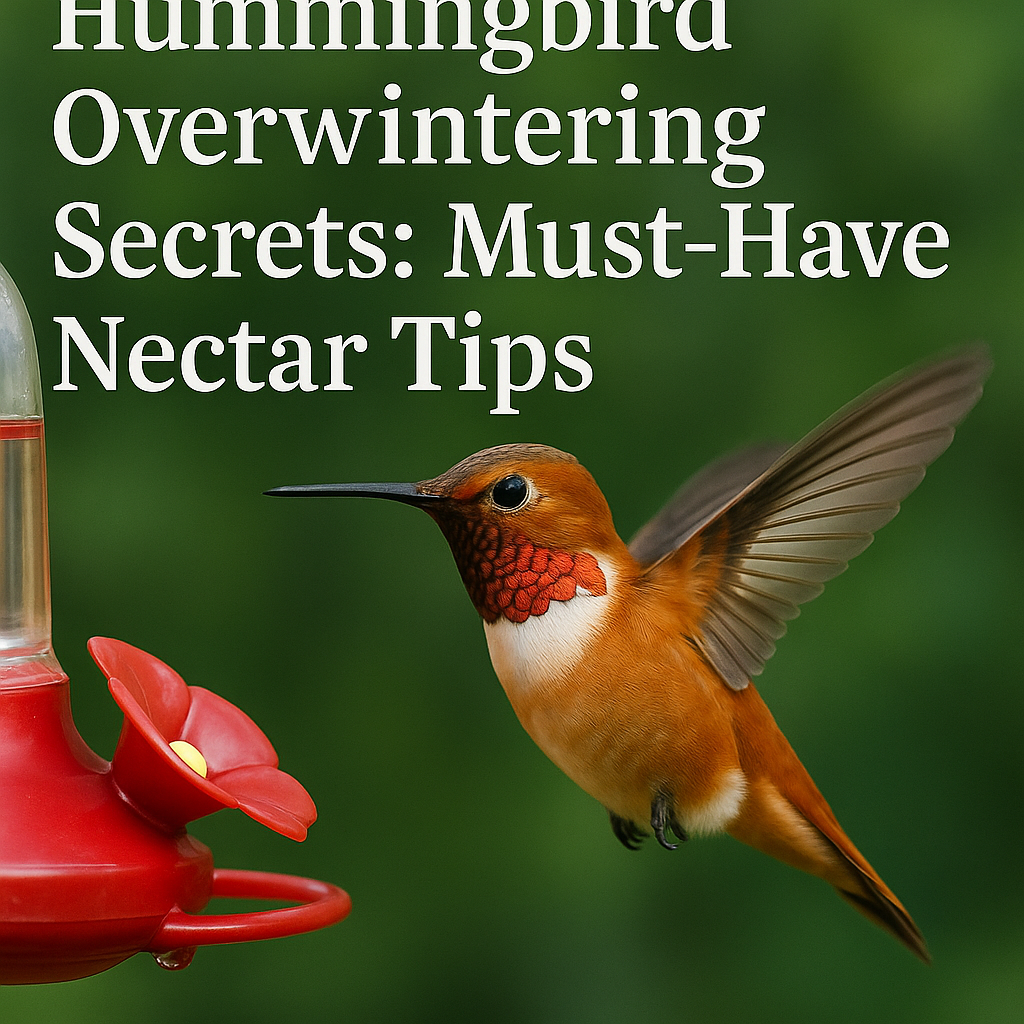Hummingbird Overwintering Secrets: Must-Have Nectar Tips
Why Are Some Hummingbirds Like the Rufous Hummingbird Overwintering in the Southeast United States Instead of Central America, and Is the Way You Make Hummingbird Nectar in the Winter Different Than the Summer?
Rufous hummingbirds are fascinating creatures known for their vibrant plumage and incredible migratory journeys. Traditionally, many hummingbird species, including the rufous hummingbird, have been known to migrate southward to Central America for the winter months. However, in recent years, bird watchers and researchers have noticed a growing number of rufous hummingbirds overwintering in the southeast United States instead of making the long trek farther south. Alongside this behavioral shift, many backyard bird enthusiasts wonder if the way to prepare hummingbird nectar changes between winter and summer. This article will explore why some rufous hummingbirds are choosing milder climates closer to home for the winter, and how seasonal changes affect the preparation of their favorite nectar.
Overwintering Behavior: Why the Shift to the Southeast United States?
Historically, rufous hummingbirds have migrated thousands of miles from their breeding grounds in the Pacific Northwest to wintering grounds in Mexico and Central America. This long migration is primarily driven by temperature, food availability, and day length. However, climate change, habitat availability, and urbanization have all influenced shifts in their migratory patterns.
In recent decades, the southeast United States has seen an increase in overwintering rufous hummingbirds. But why?
Milder Winters in the Southeast
Climate change has led to warmer winters in parts of the southeastern U.S. States like Georgia, South Carolina, and Florida now have more temperate conditions during winter months, making it energetically feasible for hummingbirds to survive without migrating as far south.Availability of Food Sources
Urban and suburban environments in the Southeast often provide abundant food sources year-round. Flowering plants that bloom in mild winter climates, as well as feeders set up by homeowners, provide reliable sustenance. Hummingbirds are known to be opportunistic feeders, so the availability of nectar year-round reduces their need to migrate long distances.Habitat Changes and Adaptability
The ability of rufous hummingbirds to adapt to different environments is a key factor. Many have learned to exploit urban habitats where heat islands and non-native plants extend the flowering season. This adaptability helps them avoid the risks and energy cost of migration.Reduction in Predation and Competition
Overwintering closer to breeding grounds may reduce exposure to certain predators or competition faced in Central America. Also, the presence of feeders reduces competition for natural nectar.
While these factors contribute to the rufous hummingbirds’ tendency to overwinter in the Southeast, it is important to note that not all individuals choose this route. Migration is a complex behavior influenced by genetics, environmental cues, and individual conditions.
Is the Way to Make Hummingbird Nectar in the Winter Different Than the Summer?
The simple answer is no—the basic recipe for hummingbird nectar remains the same throughout the year. However, there are important considerations regarding preparation and maintenance based on seasonal changes.
The Standard Nectar Recipe
The ideal hummingbird nectar is a simple solution of four parts water to one part white granulated sugar (4:1 ratio). This recipe closely mimics the natural sugar concentration found in flower nectar, providing essential energy for hummingbirds. Avoid honey, artificial sweeteners, or red dye, as these can be harmful.
Seasonal Considerations for Making Hummingbird Nectar
Water Temperature When Dissolving Sugar
In both summer and winter, it’s easier to dissolve sugar in hot water (never boiling). This ensures a clear, even solution without undissolved sugar crystals that can cause mold.Feeder Maintenance and Frequency of Refills
During summer, warm temperatures can cause nectar to spoil more quickly—fermentation or mold may develop within a day or two. Therefore, it’s necessary to clean feeders and replace nectar every 2-3 days.In winter, cooler temperatures slow the growth of mold and bacteria, allowing nectar to last longer—often up to a week. It’s still important to clean feeders regularly to prevent contamination, but the risk of rapid spoilage is lower.
Preventing Nectar from Freezing
In parts of the Southeast where hummingbirds overwinter, temperatures are usually mild enough to prevent nectar from freezing. However, if temperatures dip below freezing, you may need to take special precautions, such as placing feeders in protected locations (e.g., near sunlit windows or under eaves) or using heated feeders designed to keep nectar from freezing during cold snaps.Nectar Concentration Adjustments
Some hobbyists suggest slightly adjusting the sugar-to-water ratio in winter to provide more concentrated energy, especially when temperatures drop and birds need extra calories to maintain body heat. However, the standard 4:1 ratio remains safest and most effective for the health of hummingbirds.
Final Thoughts: Supporting Overwintering Hummingbirds
The shifting patterns of rufous hummingbirds overwintering in the Southeast United States represent a fascinating example of how wildlife adapts to changing environments. For those who enjoy attracting these vibrant birds to their feeders year-round, understanding their needs during different seasons is critical.
Maintaining a clean feeder with a proper nectar mix prepared according to season-specific needs ensures hummingbirds get the energy they require. By providing a reliable food source, bird lovers play a vital role in supporting these tiny avian marvels through the winter months, whether they have traveled hundreds of miles or decided to stay closer to home.
By understanding the behaviors and environmental needs of overwintering rufous hummingbirds—and knowing how to properly care for them—you can enjoy their presence throughout the colder months and contribute to their conservation in a changing world.






